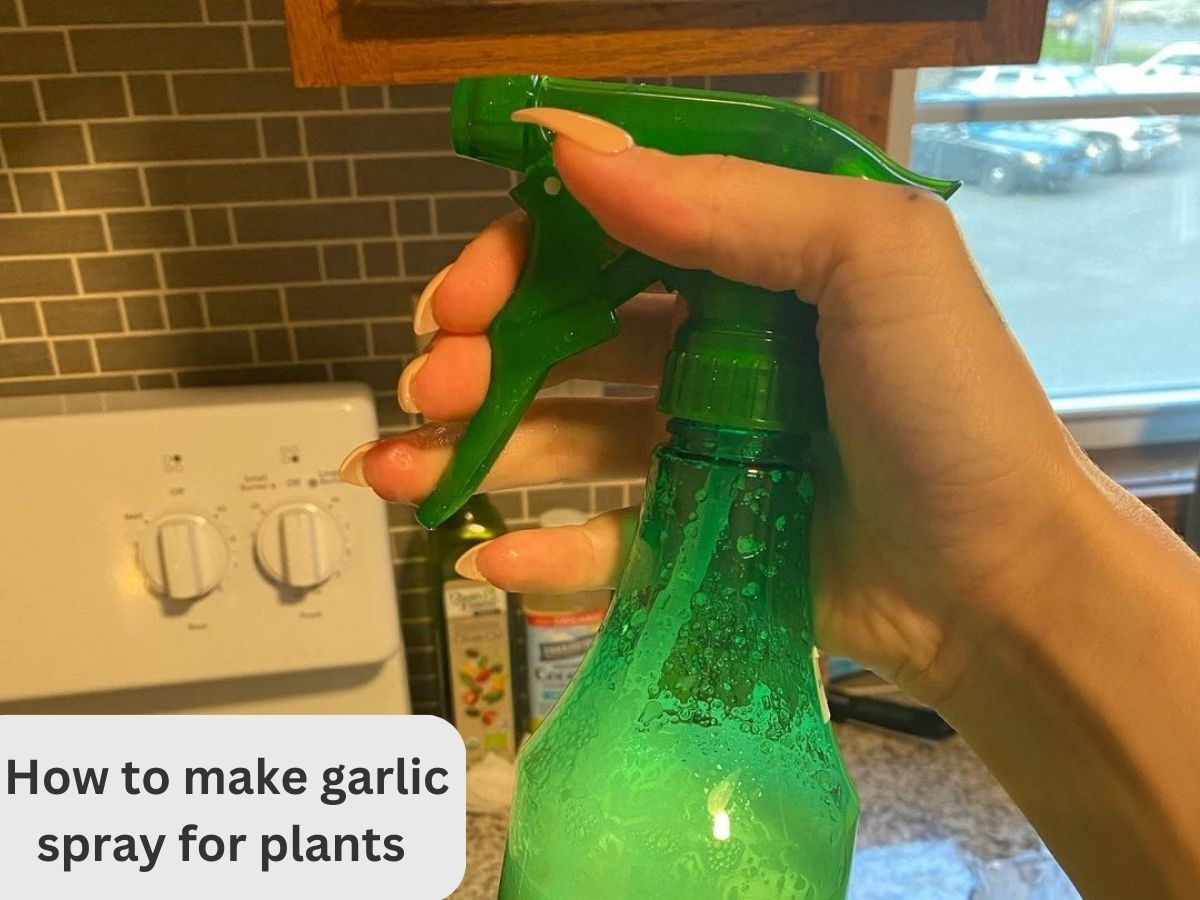Ever wondered how to make garlic spray for plants? Imagine, your garden, lush and thriving, basking in the warm sun, until one day, uninvited guests arrive. Aphids, spider mites, and whiteflies – these relentless pests can wreak havoc on your precious plants. But fret not, because we’ve got the perfect solution that’s not just effective but also entirely natural and chemical-free.
Garlic spray is the name of the game, and it’s a game-changer for any gardener. Imagine a protective shield around your plants that deters pests without harming them or the environment. That’s precisely what garlic spray does, and it’s easier to make than you might think.
In this engaging guide, we’ll unlock the secrets of crafting your very own garlic spray for plants. No more fretting about the toxic residue of chemical pesticides or the harm they might cause to beneficial insects. With garlic spray, you’ll not only protect your garden but also promote a thriving, eco-friendly oasis.
Below, you’ll discover the step-by-step process, insider tips, and all the know-how you need to create and use garlic spray effectively. Whether you’re a seasoned gardener or just starting, this natural pest control method is a game-changer you won’t want to miss. So, let’s dive right into the aromatic world of garlic spray and take your gardening to the next level!”
Why Use Garlic Spray for Plants
Gardening is a labor of love, but it comes with its fair share of challenges, the biggest of which can be those persistent garden pests. That’s where garlic spray steps in as a natural and highly effective pest repellent. Let’s delve into the reasons why more and more gardeners are turning to this aromatic solution:
Natural Pest Repellent:
Garlic spray is a true champion of natural pest control. It offers several distinct advantages over chemical pesticides. First and foremost, it’s entirely natural and chemical-free.
This means you can safeguard your garden without harming the environment, your plants, or beneficial insects. Unlike synthetic pesticides, garlic spray won’t leave toxic residues in your soil or on your produce, making it an eco-conscious choice for conscientious gardeners.
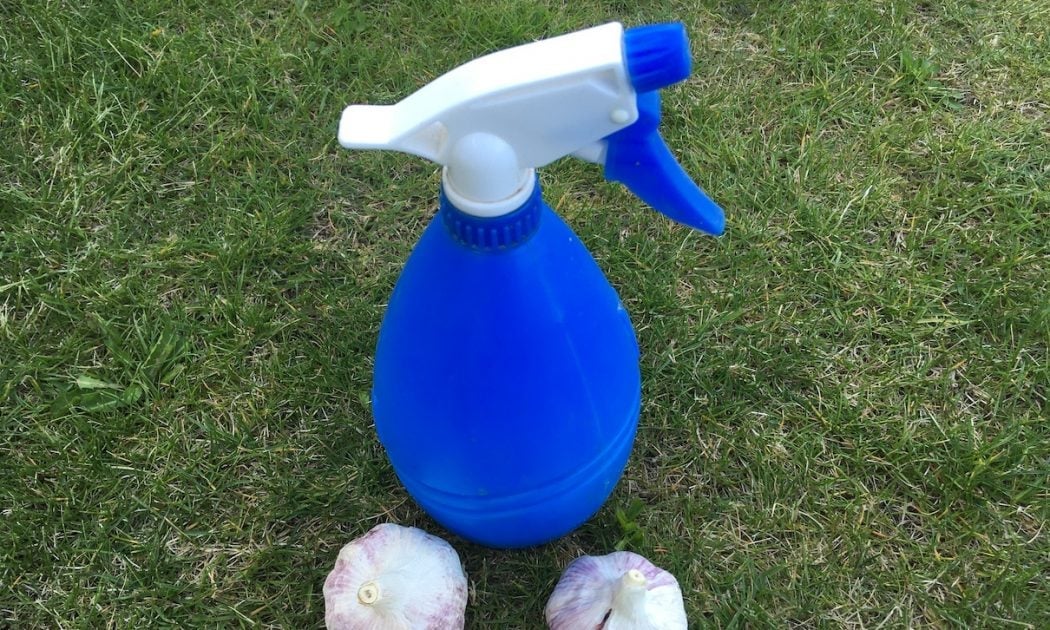
Effectiveness Against Common Garden Pests:
Garlic spray doesn’t just repel pests; it sends them packing. Its effectiveness against a wide range of common garden pests is well-documented. Here’s a look at some of the pests it can combat:
- Aphids: These tiny, sap-sucking insects are a menace to many plants. Garlic spray’s pungent odor and compounds like allicin are particularly effective in repelling aphids.
- Spider Mites: Known for their destructive web-spinning, spider mites can devastate foliage. Garlic spray creates an inhospitable environment for them, reducing their presence.
- Whiteflies: These minuscule insects can rapidly infest plants, causing extensive damage. Garlic spray not only repels whiteflies but also disrupts their life cycle.
- Caterpillars: Garlic spray can deter caterpillars, which can chew through leaves and decimate your garden.
It’s not just anecdotal evidence that supports the efficacy of garlic spray; scientific research confirms its pest-repelling power. A study conducted by the University of California’s Agriculture and Natural Resources Department found that garlic-based insecticides can significantly reduce the population of aphids and other pests in gardens.
So, whether you’re dealing with a minor pest problem or seeking an eco-friendly approach to protect your garden, garlic spray offers a natural, time-tested solution. It’s not only a safe alternative to chemical pesticides but also a way to promote a thriving, healthy garden ecosystem. With garlic spray, you can embrace the power of nature to keep your garden flourishing.
What You’ll Need Making A Garlic Spray
Before you embark on the journey of making your garlic spray for plants, it’s essential to gather all the necessary ingredients and materials. Fortunately, you won’t need anything exotic or hard to find. Here’s a list of what you’ll need and where to obtain them:
- Garlic Bulbs: You can find garlic bulbs at your local grocery store, or farmer’s market, or even grow them in your garden. For the best results, consider using organic garlic bulbs to avoid any chemical residues.
- Water:Use tap water if it’s chlorine-free. Alternatively, you can use filtered or dechlorinated water. A water filter system for your home can be a valuable addition for gardeners who want to ensure the best water quality for their plants.
- Blender or Food Processor: If you don’t already own a blender or food processor, you can easily find one at kitchen supply stores, online retailers, or even at thrift shops.
- Strainer or Cheesecloth: Most kitchen supply stores carry strainers and cheesecloths. You can also find them at general merchandise stores or order them online.
- Spray Bottle or Garden Sprayer: Spray bottles are commonly available at grocery stores, home improvement stores, or online marketplaces. For larger gardens, consider investing in a garden sprayer, which can be found at garden centers or hardware stores.
- Optional: Hot Peppers or Dish Soap (for added potency): Hot peppers can be grown in your garden or purchased at grocery stores or farmers’ markets. Dish soap can be found at any supermarket or convenience store.
- Optional: Chlorine-Free Water Filter (if your tap water contains chlorine): These can be purchased at home improvement stores, appliance stores, or online retailers specializing in water filtration.
By ensuring you have all these readily available items on hand, you’ll be well-prepared to create your homemade garlic spray for plants. It’s a simple and cost-effective solution that can make a world of difference in the health and vitality of your garden.
Step-by-Step Guide to Make Garlic Spray
Now that you’re equipped with the knowledge about garlic spray and its benefits, it’s time to put it into action. In this step-by-step guide, we’ll walk you through the process of creating and applying garlic spray to your plants, ensuring a successful and pest-free garden. Let’s get started!
Pre paring Garlic
The key to making a potent and effective garlic spray for your plants is starting with high-quality garlic cloves and properly preparing them. Here’s a step-by-step guide on selecting and peeling garlic cloves and some tips for getting the best results:
Selecting Garlic Cloves:
-
- Go Fresh and Organic: When it comes to garlic, fresh is best. Choose firm, plump garlic bulbs that feel heavy for their size. Organic garlic is preferred because it’s free from chemical residues that can potentially harm your plants.
- Avoid Sprouted or Moldy Cloves: Inspect the bulbs for any signs of sprouting or mold. Fresh, healthy cloves will have no visible sprouts and should be free from any signs of decay.
- Consider Hardneck Varieties: Hardneck garlic varieties are known for their robust flavor and higher allicin content, which is the compound responsible for garlic’s pest-repelling properties.
Peeling Garlic Cloves:
-
- Separate the Cloves: Gently break apart the garlic bulb into individual cloves. Use cloves that are plump and free from damage or discoloration.
- Loosen the Skin: Place the flat side of a chef’s knife over a garlic clove and press down firmly with the heel of your hand. This will slightly crush the clove, making it easier to peel.
- Remove the Skin: Once the garlic clove is crushed, the skin should easily peel away. You can use your fingers to peel it off or use the tip of your knife to lift the edge of the skin and then slide it off.
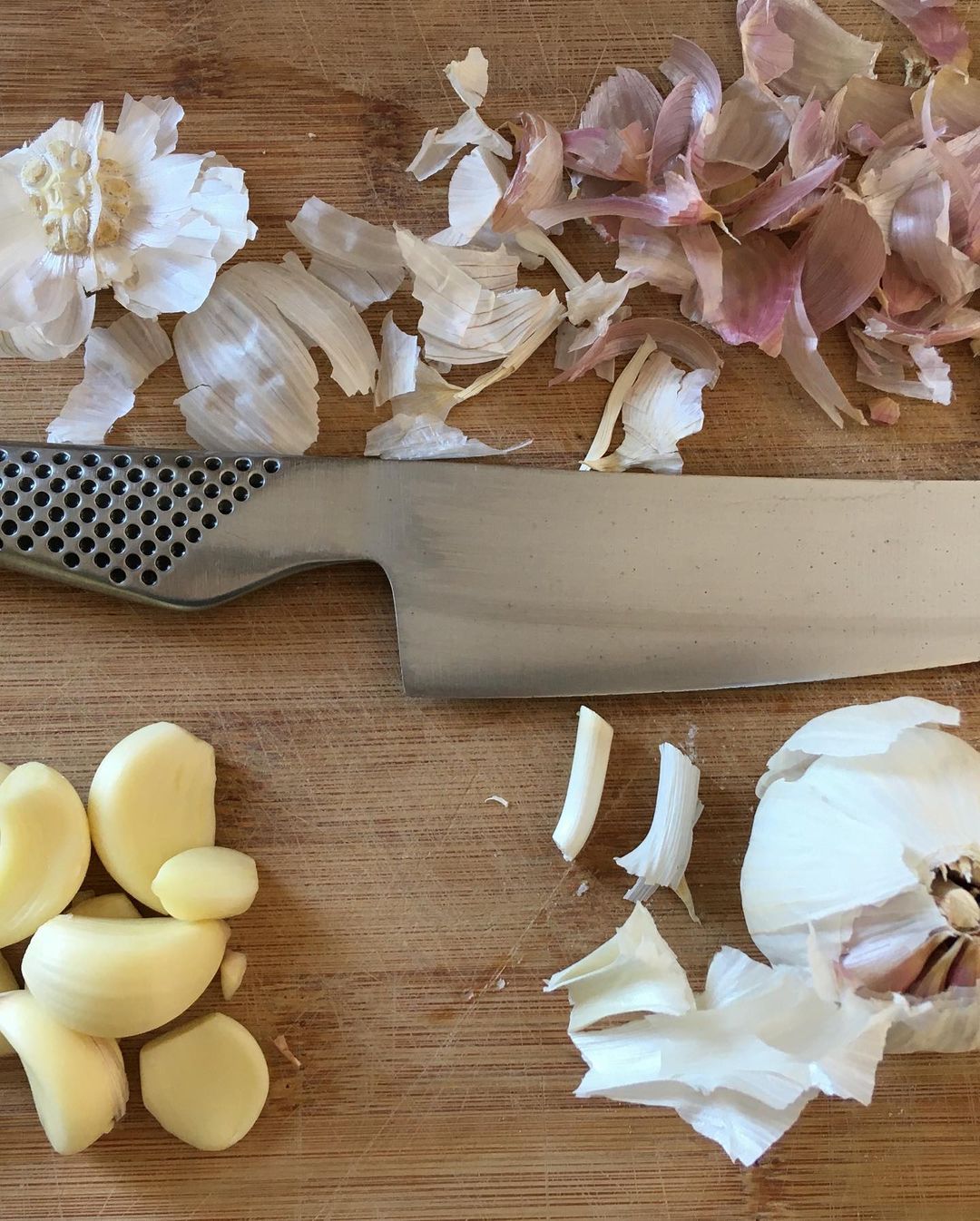
Why you need to use fresh garlic
- Higher Allicin Content: Fresh organic garlic contains higher levels of allicin, the active compound responsible for its pest-repelling properties. This makes it more effective in deterring garden pests.
- Avoid Pre-Peeled Garlic: While pre-peeled garlic cloves are convenient, they may have a reduced allicin content due to exposure to air. It’s best to peel your garlic cloves just before using them to maximize their potency.
- Grow Your Own: For the freshest garlic, consider growing your own. Garlic is relatively easy to cultivate and can thrive in various climates. This way, you’ll have a consistent supply of organic garlic for your spray.
By following these steps and using fresh, organic garlic, you’ll ensure that your garlic spray is not only effective but also environmentally friendly. Now that your garlic is prepped, you’re one step closer to creating a powerful natural pest control solution for your plants.
Making the Garlic Mixture
Now that you’ve selected and peeled your garlic cloves, it’s time to transform them into a potent garlic mixture for your plant spray. Follow these steps for blending or crushing the garlic cloves and combining them with water and any optional ingredients:
Blending or Crushing Garlic Cloves:
- Using a Blender or Food Processor: Place the peeled garlic cloves into a blender or food processor. The quantity of garlic cloves you use depends on the size of your equipment and the potency you desire. Start with a moderate amount, such as one cup of peeled cloves.
- Blend Until Smooth: Pulse or blend the garlic cloves until you achieve a smooth, thick paste. The goal is to break down the cloves into fine particles, releasing their natural oils and active compounds.
- Check for Consistency: Stop and scrape down the sides of the blender or food processor as needed to ensure even blending. Continue until the mixture is relatively homogeneous, with no large garlic chunks remaining.
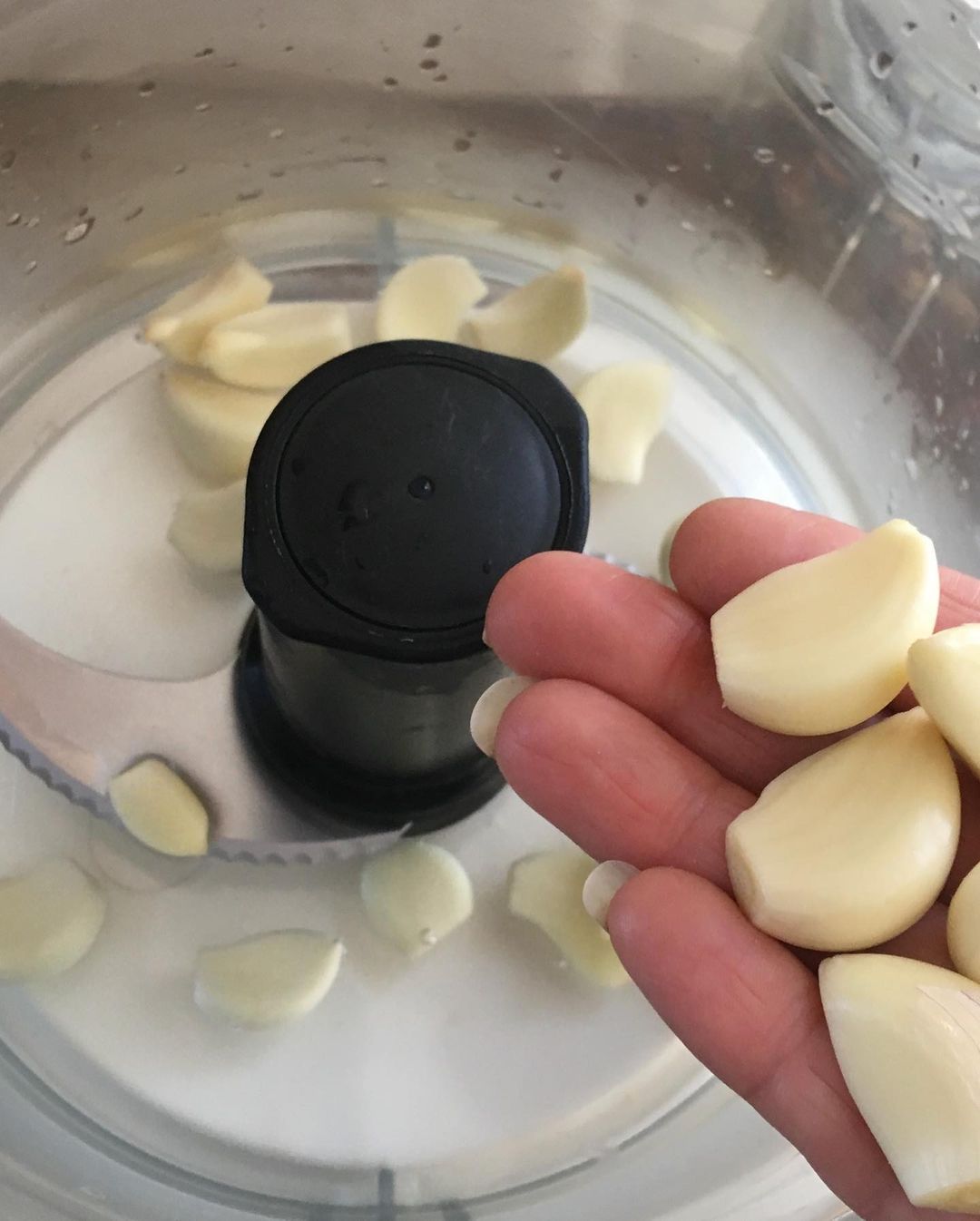
Combining Garlic with Water and Other Ingredients (if any):
- Select Your Mixing Container: Transfer the blended garlic paste to a suitable container for brewing. A glass or plastic container with a lid works well.
- Add Water: For each cup of blended garlic paste, add ten cups of water. This 1:10 ratio is a general guideline, but you can adjust it depending on the potency you desire and the sensitivity of your plants. If you’re using hot peppers or dish soap (optional), this is the time to add them as well. Just a few chopped hot peppers or a teaspoon of dish soap can enhance the effectiveness of your garlic spray.
- Mix Thoroughly: Stir the garlic and water mixture vigorously to ensure even distribution. This step is crucial because it helps dilute the garlic paste, making it safe for your plants while retaining its pest-repelling properties.
With the garlic blended or crushed and mixed with water and optional ingredients, you’re now ready to brew your garlic spray. This aromatic concoction will become your garden’s natural shield against pests, all while nurturing your plants with its organic goodness.
Straining the Mixture
After blending or crushing the garlic cloves and combining them with water, the next crucial step in making garlic spray for plants is straining the mixture. This step ensures that your spray is free from solid particles that might clog your sprayer and allows for a smoother application. Here’s how to strain the mixture effectively:
Gather Your Materials:
- Fine Mesh or Cheesecloth: To strain the garlic mixture, you’ll need a fine mesh strainer or a piece of cheesecloth. These materials will catch the solid particles while allowing the liquid to pass through.
- Large Bowl or Container: Place the strainer or cheesecloth over a large bowl or container to catch the strained liquid.
Position the Strainer or Cheesecloth:
- If you’re using a fine mesh strainer, position it over the bowl so that it forms a secure seal. Make sure the strainer is clean and free from any debris.
- If you’re using cheesecloth, drape it over the bowl, leaving enough excess on the sides to create a pouch. Secure the cheesecloth in place by folding the excess over the edges of the bowl.
Pour the Mixture:
- Carefully pour the garlic and water mixture into the strainer or onto the cheesecloth. Ensure that you pour slowly and steadily to prevent splashing or spills.
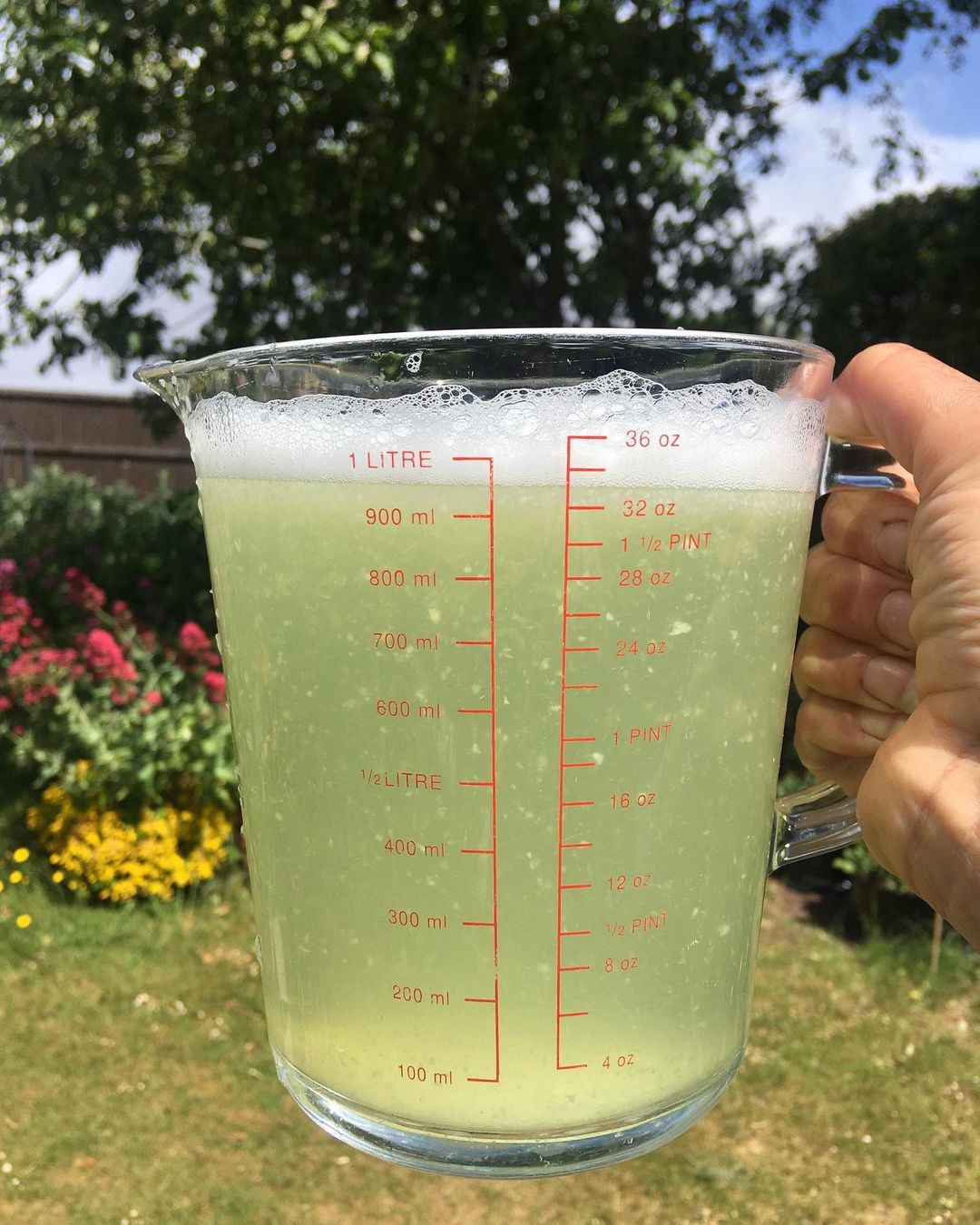
Allow the Straining Process:
- Let gravity do its work. The liquid will pass through the strainer or cheesecloth while the solid garlic particles remain trapped.
Gather the Cheesecloth (if used):
- If you’ve used cheesecloth, carefully gather the corners of the cloth once the liquid has drained. Lift it slightly to create a pouch and gently twist it to squeeze out any remaining liquid.
Discard or Compost Solid Particles:
- After straining, you’ll be left with a liquid that’s free from solid particles. You can discard the solid garlic remnants. If you compost, they can be added to your compost pile.
Store the Liquid:
- Transfer the strained garlic liquid into a clean, labeled container for storage. A spray bottle or garden sprayer is ideal for easy application.
Clean Your Straining Equipment:
- Rinse or wash the fine mesh strainer or cheesecloth thoroughly to remove any remaining garlic residue. This step is crucial to prevent cross-contamination when using these items for other culinary or gardening purposes.
Straining the garlic mixture ensures that your homemade garlic spray is smooth and ready for application. With solid particles removed, you’ll have a hassle-free experience when it comes to spraying your plants, while the active compounds from the garlic remain in the liquid to effectively deter garden pests.
Applying Garlic Spray to Plants
Now that you have your diluted garlic spray ready, it’s crucial to know when, how, and where to apply it to maximize its effectiveness while ensuring the health of your plants.
Timing and Weather Conditions:
- Morning or Evening: The best times to apply garlic spray are in the early morning or late evening when the weather is cooler. Avoid spraying during the hottest part of the day to prevent potential leaf burn. Morning application is often preferred as it allows the plant leaves to dry during the day, reducing the risk of fungal diseases.
- Dry Weather: Choose a day with little to no rain in the forecast. Rain can wash away the garlic spray, reducing its effectiveness. Additionally, it’s important to apply garlic spray when the plants are not already wet from rain or dew.
- Wind Conditions: Opt for a calm day with minimal wind to prevent drift. Wind can carry the garlic spray away from your target plants and onto neighboring areas, potentially affecting unintended plants.
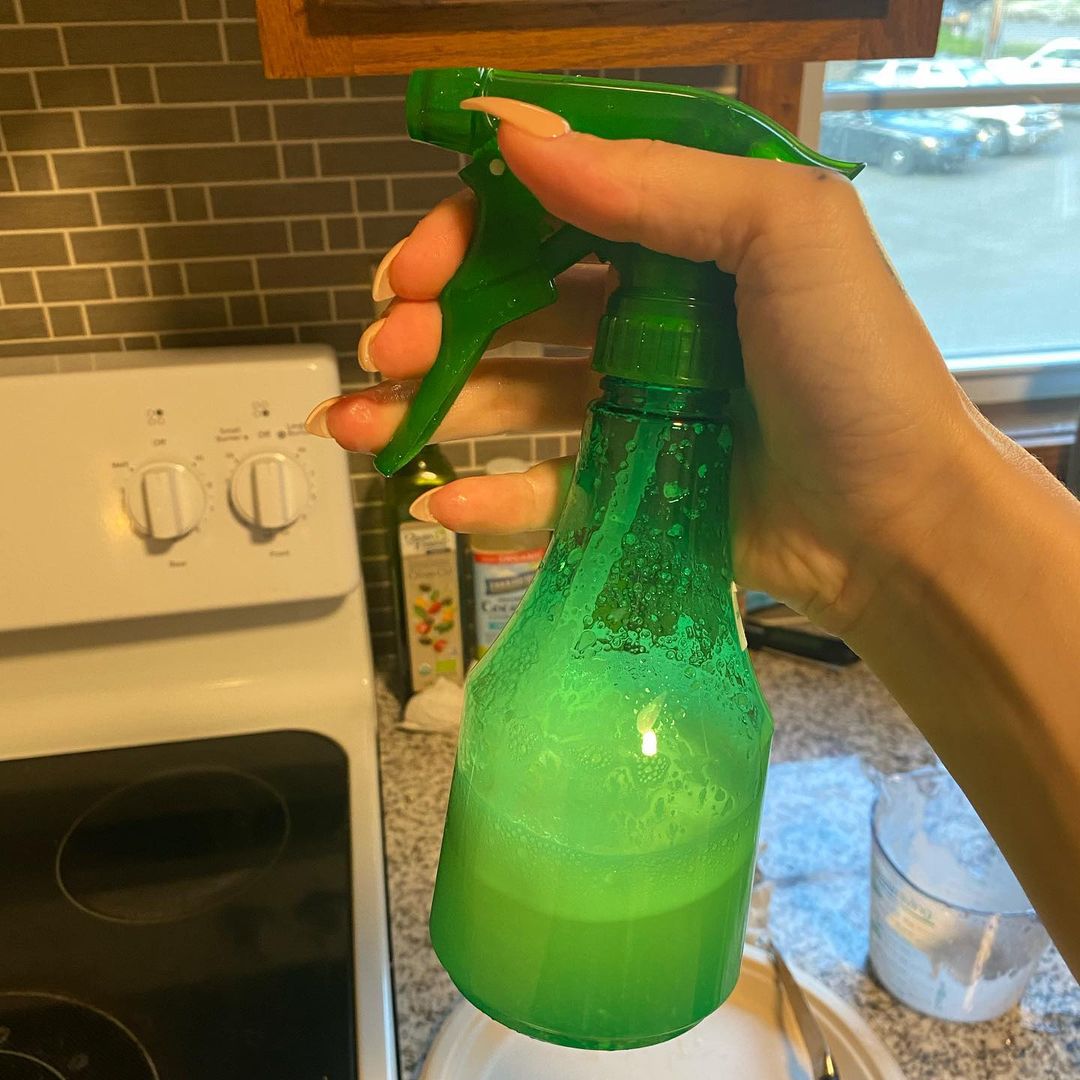
Application Technique:
- Spray Bottle or Garden Sprayer: You can apply garlic spray using a spray bottle for smaller areas or a garden sprayer for larger gardens. Ensure that your chosen equipment is clean and free from residues of any previous substances.
- Uniform Spraying: Hold the spray nozzle or wand approximately 12-18 inches away from the plant leaves. This distance allows for a fine mist that ensures even coverage without excessive force that might damage the foliage.
- Even Strokes: Begin spraying from the top of the plant and work your way down, ensuring that both the upper and lower surfaces of the leaves are thoroughly covered. Pay special attention to the areas where pests are most likely to congregate.
- Repeat as Needed: For effective pest control, it’s usually necessary to reapply garlic spray. The frequency of application may vary depending on the severity of the pest problem and weather conditions. Typically, you should reapply after rain or every two weeks.
Importance of Thorough Coverage:
- Complete Leaf Coverage: One of the key factors in the success of garlic spray is achieving thorough coverage on all parts of the plant, especially the leaves. Many pests, such as aphids and spider mites, primarily target the undersides of leaves. Missing these areas can leave your plants vulnerable.
- Target Pest Hotspots: Focus on areas where pests are commonly found, such as the new growth and the tips of branches. These are the areas where pests are most likely to attack.
- Consistency is Key: Ensure that each plant in your garden receives the same level of coverage. Consistency is important to prevent pests from finding unprotected areas.
By applying garlic spray during the appropriate times, using the right equipment and techniques, and ensuring thorough coverage of your plant leaves, you’ll effectively harness the power of garlic as a natural pest deterrent while promoting the health and vitality of your garden.
Can I use garlic spray on all types of plants?
While garlic spray can be an effective natural pest deterrent for many types of plants, it’s important to consider the sensitivity of the plants you intend to treat. Some plants may be more tolerant of garlic spray than others. Here are some guidelines to help you determine whether to use garlic spray on specific types of plants:
Plants That Tolerate Garlic Spray Well:
- Hardy Vegetables: Most robust vegetables like tomatoes, peppers, and potatoes tend to tolerate garlic spray without issues.
- Herbs: Many herbs, including basil, oregano, and rosemary, can withstand garlic spray applications.
- Ornamental Plants: Garlic spray is often used on ornamental plants like roses, marigolds, and chrysanthemums to deter pests.
Plants That May Be Sensitive to Garlic Spray:
- Soft-Leafed Plants: Some soft-leafed plants, such as lettuce and spinach, may be more sensitive to garlic spray and can develop leaf burn or other issues if the solution is too concentrated. In such cases, it’s essential to use a milder dilution or test a small area first.
- Legumes: Certain leguminous plants, like beans and peas, might be more sensitive to garlic spray. Again, using a milder solution or testing on a few plants can help determine their tolerance.
- Flowering Plants: Be cautious when using garlic spray on plants that are in bloom or about to bloom. The pungent odor may deter pollinators like bees. Apply the spray in a way that minimizes direct contact with the flowers.
- Seedlings: Young seedlings may be more sensitive to garlic spray. Wait until they are a bit more established before applying the spray.
Testing is Key:
When in doubt, it’s always a good practice to test garlic spray on a small portion of the plant or a single plant before treating your entire garden. This way, you can assess how the plant reacts and whether there are any adverse effects.
Adjusting Dilution:
If you’re concerned about the sensitivity of your plants, you can adjust the dilution ratio by using more water and less garlic mixture to create a milder solution. This approach can help minimize any potential negative effects while still providing some level of pest protection.
In summary, while garlic spray can be used on many types of plants, it’s essential to consider the specific needs and sensitivities of your plants and make adjustments accordingly. Proper testing and a cautious approach will help you strike the right balance between pest control and plant health.
How often to apply garlic spray?
The frequency of applying garlic spray to your plants can vary depending on several factors, including the severity of the pest problem, weather conditions, and the type of plants you are treating. Here are some general guidelines to help you determine how often to apply garlic spray:
- Regular Maintenance: As part of your regular garden maintenance routine, you can apply garlic spray preventatively every two to three weeks during the growing season. This schedule helps create a barrier against pests and deters them from infesting your plants.
- After Rain: Whenever your garden receives significant rainfall, it’s a good practice to reapply garlic spray. Rain can wash away the spray, reducing its effectiveness. Apply it again once the plants have dried to maintain protection.
- Pest Severity: If you notice an increase in pest activity or damage, you may need to apply garlic spray more frequently. In cases of severe infestations, you might need to apply it every week until the problem is under control.
- Plant Sensitivity: Consider the sensitivity of your plants. Some plants may be more tolerant of garlic spray than others. Be cautious with sensitive plants and monitor them closely for any signs of stress or damage.
- Environmental Conditions: In hot and dry weather, garlic spray may evaporate more quickly. In such conditions, you may need to apply it more often to ensure consistent coverage and protection.
- New Growth: Focus on applying garlic spray to the new growth and tips of branches, as these areas are often targeted by pests. Regularly inspect your plants and apply the spray to areas where pests are most active.
- Companion Planting: If you’re practicing companion planting by interplanting garlic with other vegetables or herbs, you may not need to apply garlic spray as frequently, as the presence of garlic plants can help deter pests naturally.
Remember that garlic spray is a natural and safe pest control method, so you have some flexibility in how often you apply it. It’s important to monitor your plants regularly for signs of pests and adjust your application frequency based on your observations.
Additionally, keep a garden journal to track your application schedule and the effectiveness of garlic spray on different plants. This record can help you refine your pest control strategy over time and achieve the best results for your garden.
Safety Precautions
While garlic spray is generally safe and environmentally friendly, there are some safety precautions you should keep in mind when applying it to your plants:
- Protective Gear: It’s a good idea to wear protective clothing, including gloves and safety goggles when mixing and applying garlic spray. This precaution helps prevent skin and eye irritation, especially if you have sensitive skin or eyes.
- Avoid Inhalation: Garlic spray can have a strong odor, and inhaling it directly from the spray bottle can be unpleasant. Apply the spray with the wind at your back to avoid breathing in the mist. If you’re particularly sensitive to odors or have respiratory issues, consider wearing a mask.
- Prevent Contact with Face and Eyes: Avoid touching your face, especially your eyes, while applying garlic spray. If you accidentally get the spray on your skin or in your eyes, rinse immediately with plenty of water.
- Keep Children and Pets Away: Ensure that children and pets are not in the immediate vicinity while you’re applying garlic spray. While the spray is generally safe, it’s best to prevent accidental ingestion or contact.
- Label Containers Clearly: If you store garlic spray in reused containers (like old spray bottles), make sure they are properly labeled to avoid confusion with other substances.
- Store Securely: Store your garlic spray and any leftover mixture out of reach of children and pets in a cool, dry, and secure location. Use childproof caps if available.
- Dilution and Testing: Always follow the recommended dilution ratios and test the garlic spray on a small portion of your plants before applying it to your entire garden. This helps ensure that your plants can tolerate the spray and that it’s effective against pests.
- Wash Produce: If you’re using garlic spray on edible plants, make sure to wash the produce thoroughly before consumption to remove any residual garlic spray.
- Read Product Labels: If you’re using a commercially prepared garlic spray product, read and follow the manufacturer’s instructions and safety guidelines.
- Dispose of Unused Spray Properly: If you have leftover garlic spray that you won’t use, do not pour it down the drain or dispose of it in a way that might contaminate water sources. Follow local disposal guidelines for safe and environmentally friendly disposal.
By taking these precautions, you can ensure that you use garlic spray safely and effectively in your garden, promoting plant health and pest control while minimizing any potential risks.
